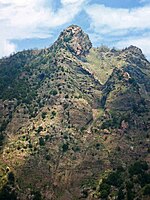Battle of Vesuvius

The Battle of Vesuvius (also known as the Battle of the Veseris) was the first recorded battle of the Latin War. The battle was fought near Mount Vesuvius in 340 BC between the Romans, with their allies the Samnites, against a coalition of several peoples: Latins, Campanians, Volsci, Sidicini, and Aurunci. The surviving sources on the battle, however, focus almost solely on the Romans (led by Titus Manlius Torquatus and Publius Decius Mus) and the Latins. The battle became famous for two episodes said to have taken place: Manlius Torquatus' execution of his own son after he disobeyed orders and fought an enemy champion in single combat, and the self-sacrifice of Decius Mus, who devoted himself and the enemy army to the gods of the underworld, and then charged into the enemy lines and was slain.After Decius Mus had fallen, consul Manlius Torquatus led his veteran reserve against Latin lines and killed or captured nearly three fourths of the Latin army. The remaining soldiers of the Latin army fled, but because the Roman loss was so great, they could not pursue their enemies.
Excerpt from the Wikipedia article Battle of Vesuvius (License: CC BY-SA 3.0, Authors, Images).Battle of Vesuvius
Strada Matrone,
Geographical coordinates (GPS) Address Nearby Places Show on map
Geographical coordinates (GPS)
| Latitude | Longitude |
|---|---|
| N 40.8211 ° | E 14.4261 ° |
Address
Strada Matrone
80040
Campania, Italy
Open on Google Maps










